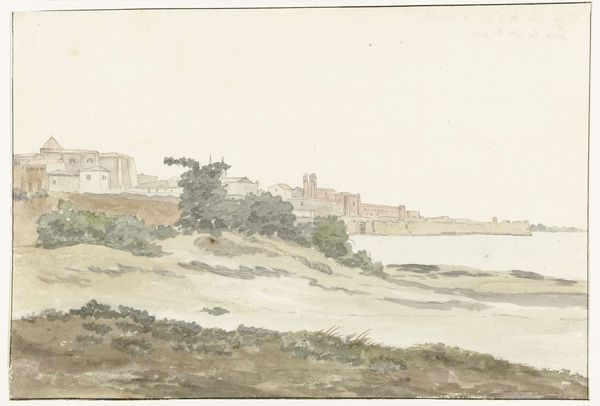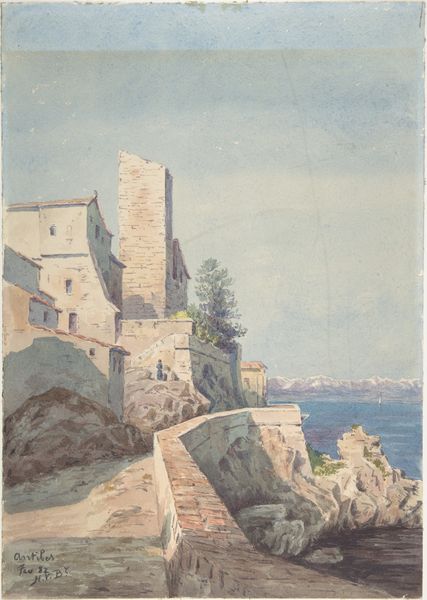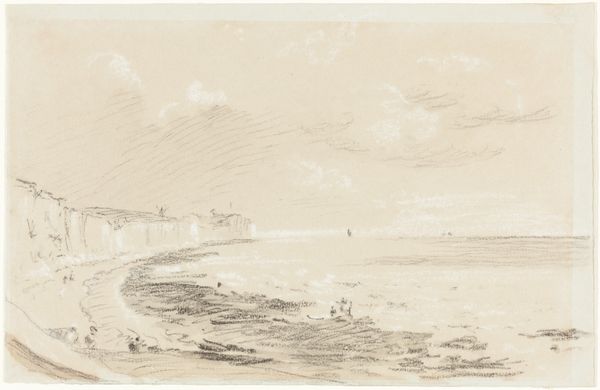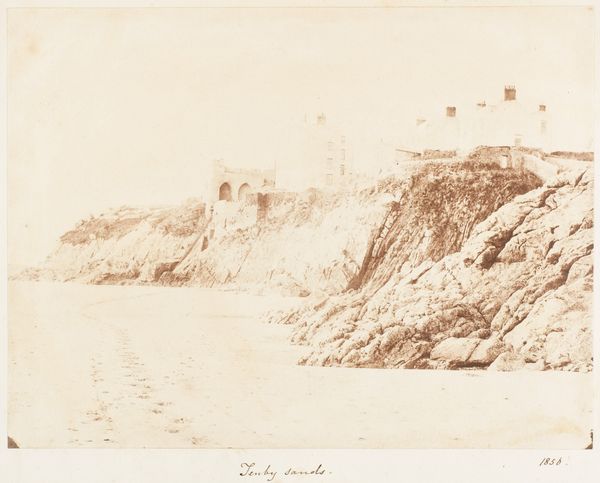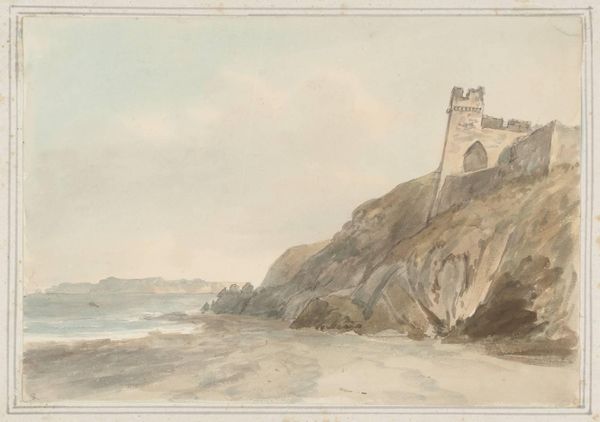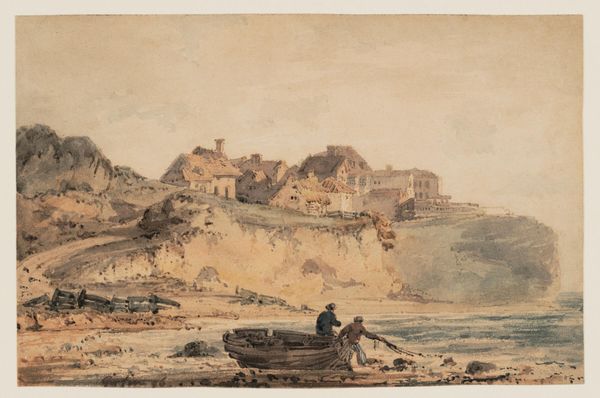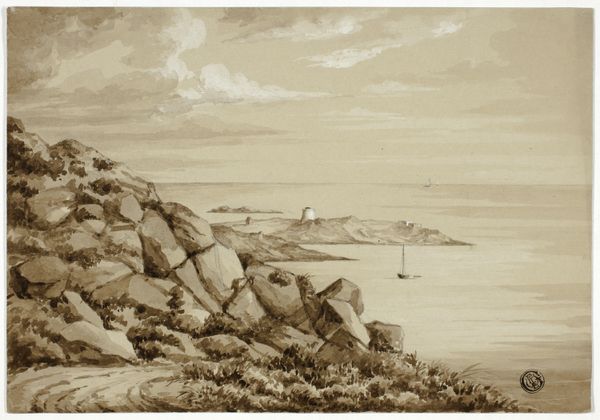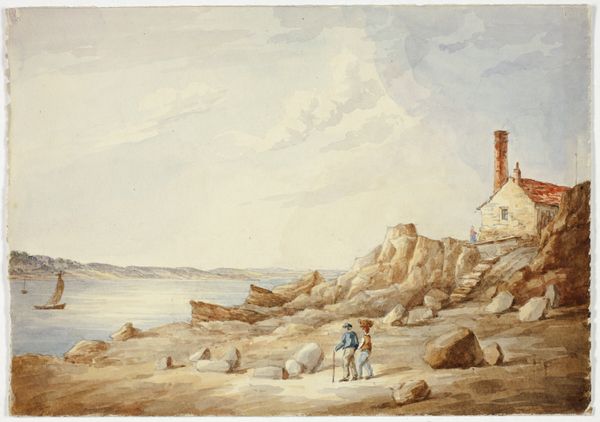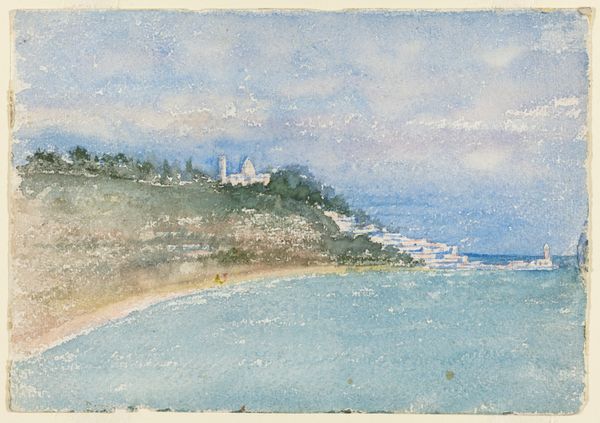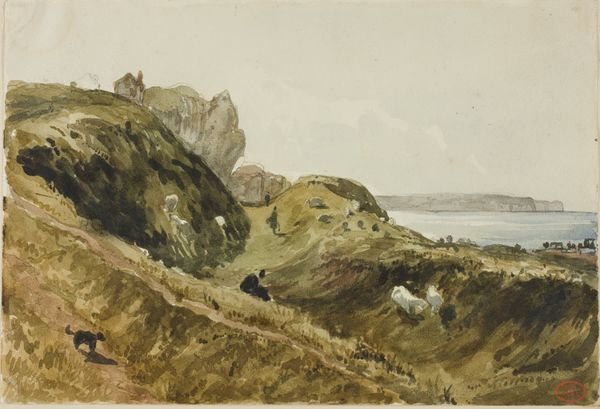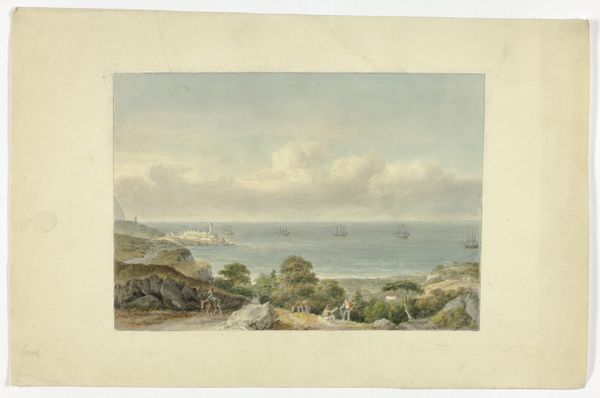
drawing, painting, print, watercolor
#
drawing
#
painting
# print
#
impressionism
#
landscape
#
watercolor
#
watercolor
Dimensions: Sheet: 9 1/2 x 12 3/4 in. (24.1 x 32.4cm)
Copyright: Public Domain
Curator: Looking at "La Bocca," painted by Henry Victor Burgy in 1882, I’m immediately struck by the serene, almost ethereal quality. Editor: There’s something interesting in the depiction of labor happening here. A monk stands on a beach where wood-working tools have been scattered. Was there any religious structure related to carpentry in La Bocca in the late 19th century? Curator: Well, the location itself and the institutional setting would have influenced Burgy's work. Travel became more accessible to the rising bourgeois, generating increased consumption for landscape paintings that became more available to new museums and galleries catering to these buyers. As we know it today, Impressionism really benefited from this growth, emphasizing spontaneous execution in outdoor conditions with materials that supported these painting expeditions. Editor: True. Burgy would have had to carry his watercolor set on trains and boats to reach the coasts in Italy, for example, which shows us a different degree of freedom and economic means in comparison to what artists used to have, particularly when commissioned to complete historical paintings, large in scale. But getting back to Burgy’s "La Bocca" here, there's almost an indifference in the treatment of figures. Do you think the figures could have been rendered in situ? What kind of social commentary are we dealing with? Curator: I tend to think it captured the mood and leisure that travel afforded bourgeois society at the time. The brushstrokes are so immediate and fluid; he was capturing fleeting impressions in watercolor. It evokes a sense of leisure, which then allows people to wonder what these figures are doing. And the placement of the city structure overlooking the entire scene serves as a perfect display of bourgeois power over the working classes. Editor: You’re probably right in arguing that, if the structures overseeing the landscapes embody societal authority, Burgy, being a bourgeois man with the right resources, became responsible for carrying it. These paintings and prints definitely circulated throughout society carrying more messages than meets the eye. The quick gesture definitely supported the rising market trends to capitalize on painting acquisitions as well. Curator: I see what you mean. In looking closely at this beachside landscape, the economic structures shaping artistic creation certainly give a new light to understanding the Impressionist era. Editor: Yes. And next time you look at it, I wonder if you’ll still think this is just a landscape artwork, or a depiction of capital and labor.
Comments
No comments
Be the first to comment and join the conversation on the ultimate creative platform.
